General dangers in forest areas

Entering the forest is always at your own risk. To help you better assess the general dangers, we have compiled an overview that is primarily intended to sensitise you to less obvious risks and thus serve as support for a safe stay in nature. Our tip: Always walk through the forest with your eyes open!
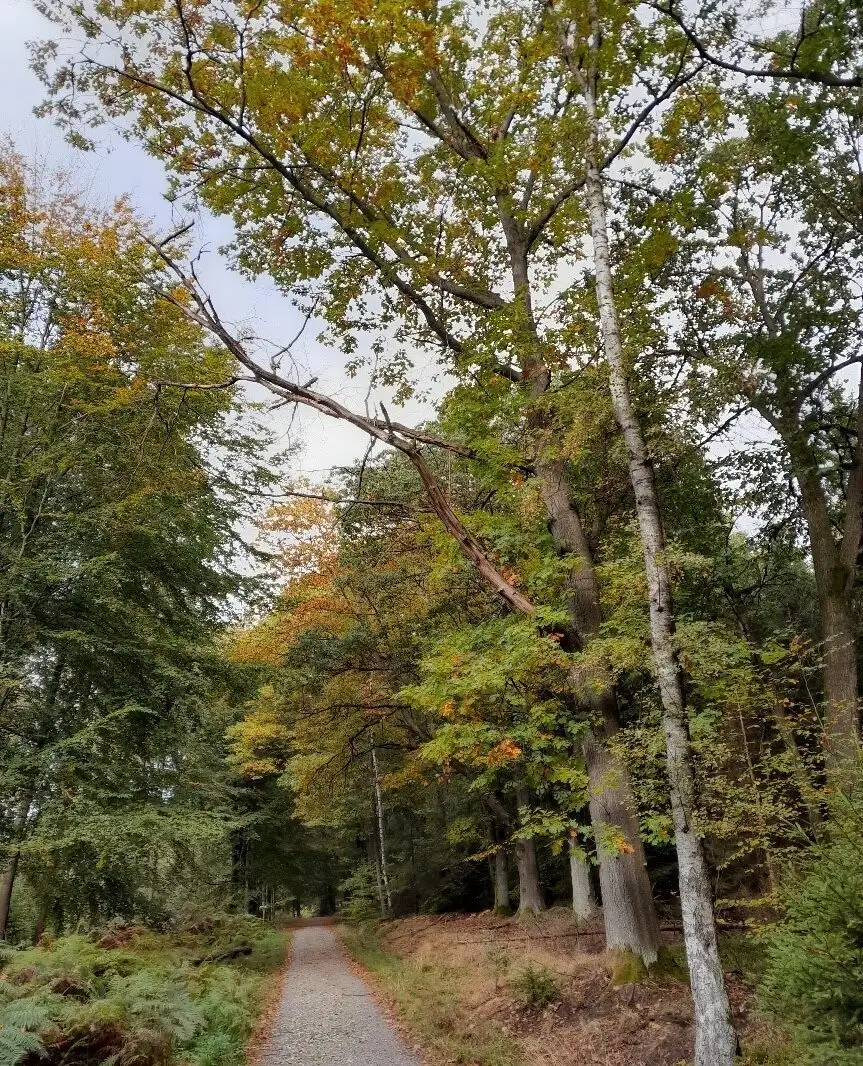
Danger from dead branches in hardwood crowns
Dead branches hanging in the crowns of deciduous trees are a danger that is often underestimated. Dead branches are usually easy to see in the lower trunk area (picture on the left). Damage in the upper parts of the crown is more difficult to recognise, especially in summer when the leaves block the view into the crown (picture on the right).
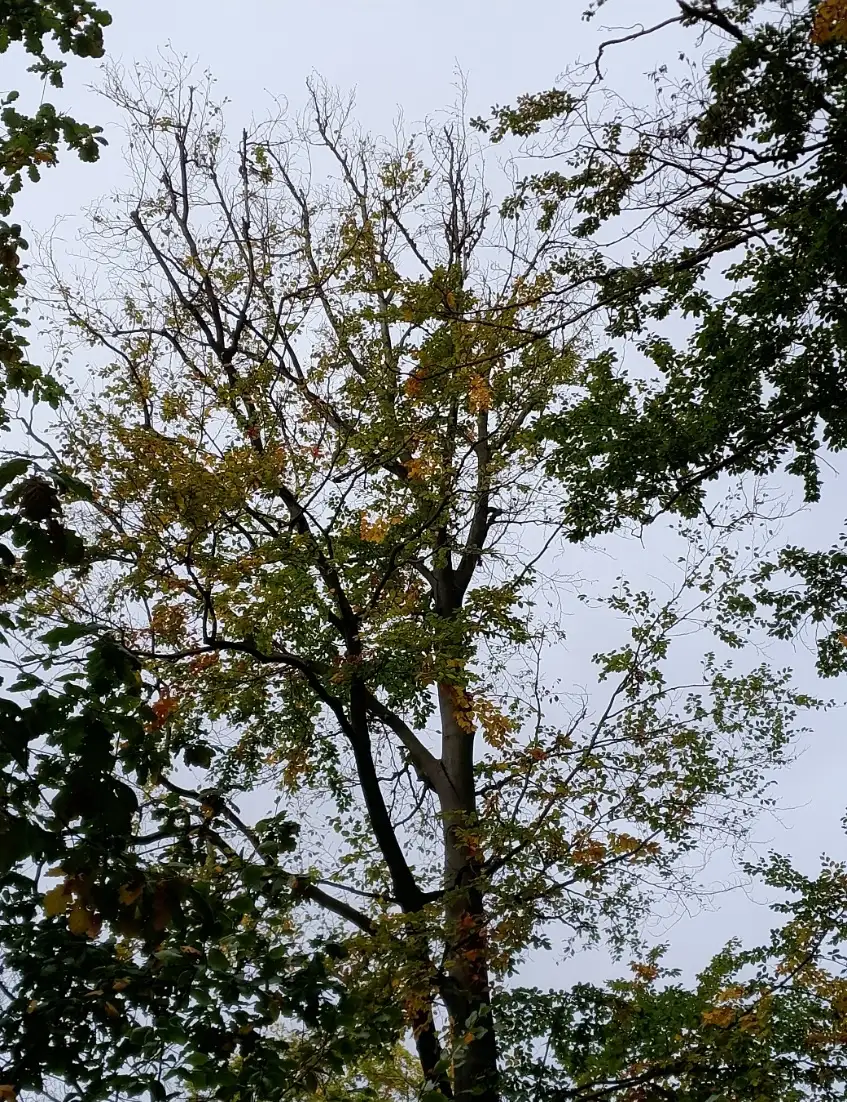
Danger from snagged trees
Snagged trees also pose a great danger as they can fall to the ground at any time. Therefore: walk past quickly and, if possible, in a wide arc.
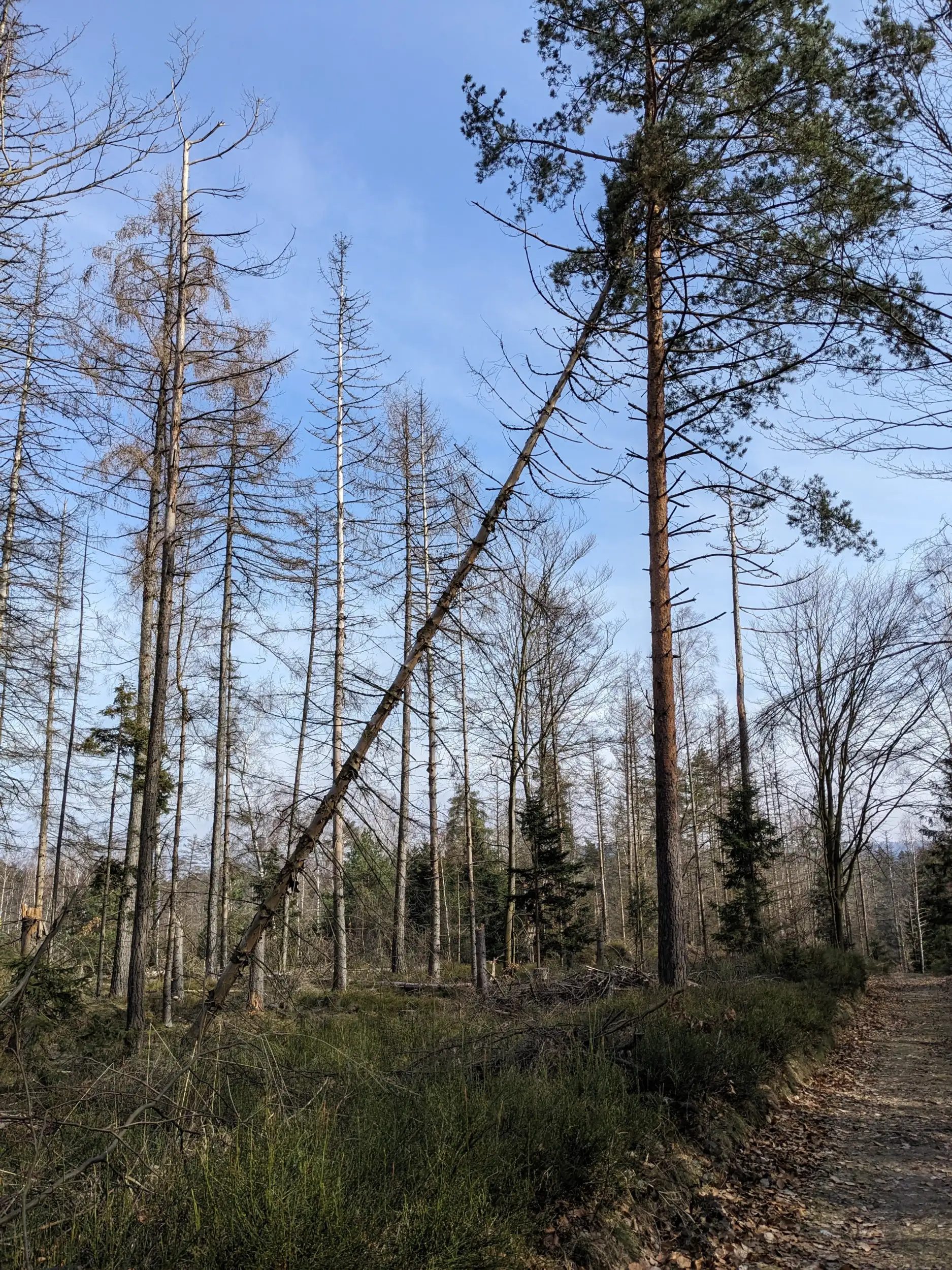
Danger from hanging crown parts
When trees fall over, parts of the crown can break off and get caught in neighbouring trees. A branch can break, causing the hanging part of the crown to lose its hold and fall to the ground. The picture shows part of a spruce crown hanging in a neighbouring spruce crown.
Such situations are particularly dangerous as they are difficult to assess. In such cases, it is important to walk past the affected tree quickly and, if possible, in an arc.
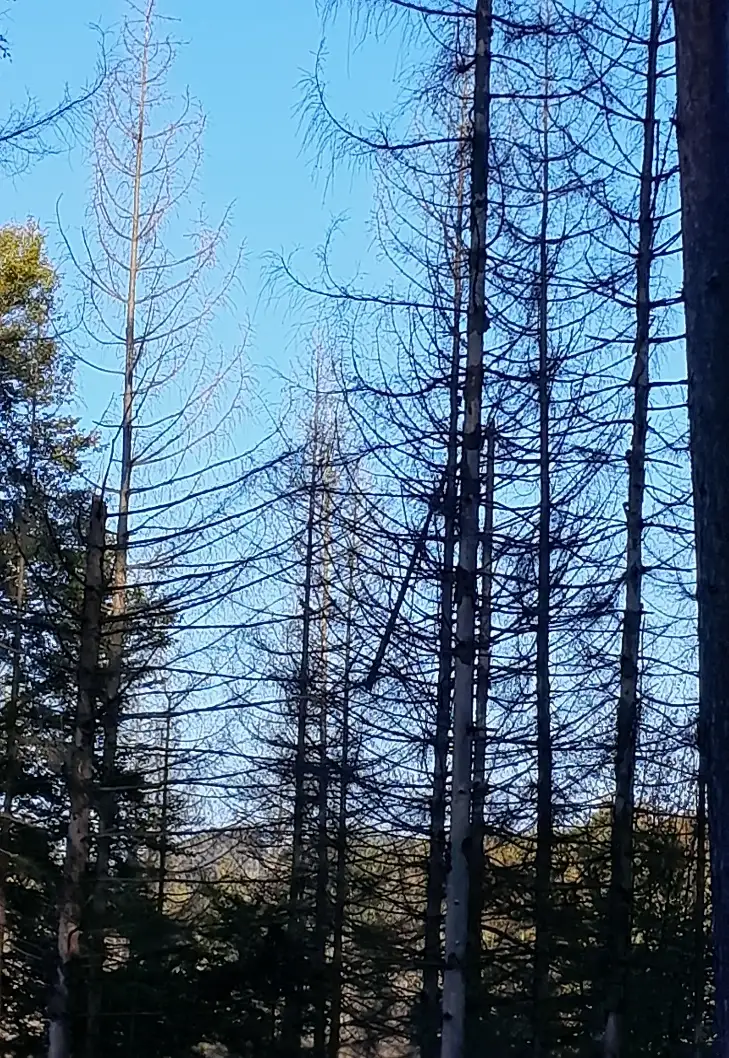
Danger from trees standing in the wind
After felling or the natural toppling of trees, remaining trees are suddenly unprotected in the wind. Their root system is not designed to withstand the forces suddenly acting on the tree. This can lead to further tree breakage, especially in peripheral areas, where a larger area exposed to the wind has now been created. Pay particular attention to this danger in strong winds - it is better not to go for a walk in the forest then.
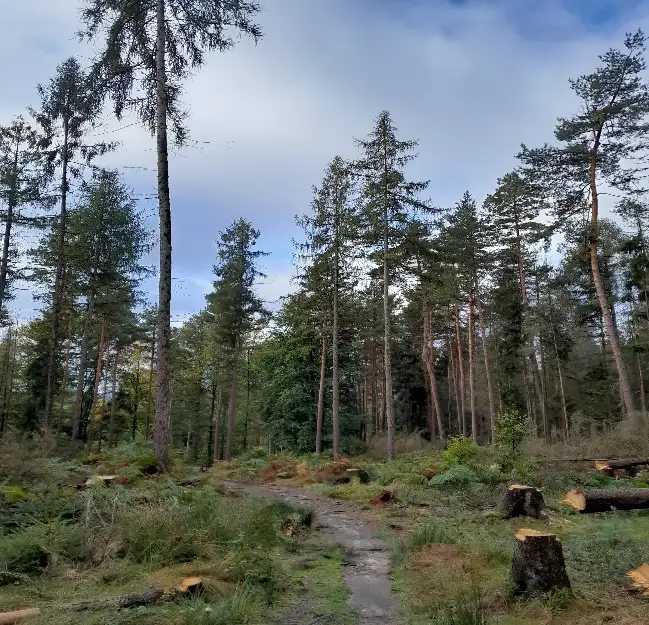
Danger from damaged trees
Another less obvious danger are trees that are damaged by rot. One sign of decay can be fungal brackets on the trunk, but often no external signs are visible.
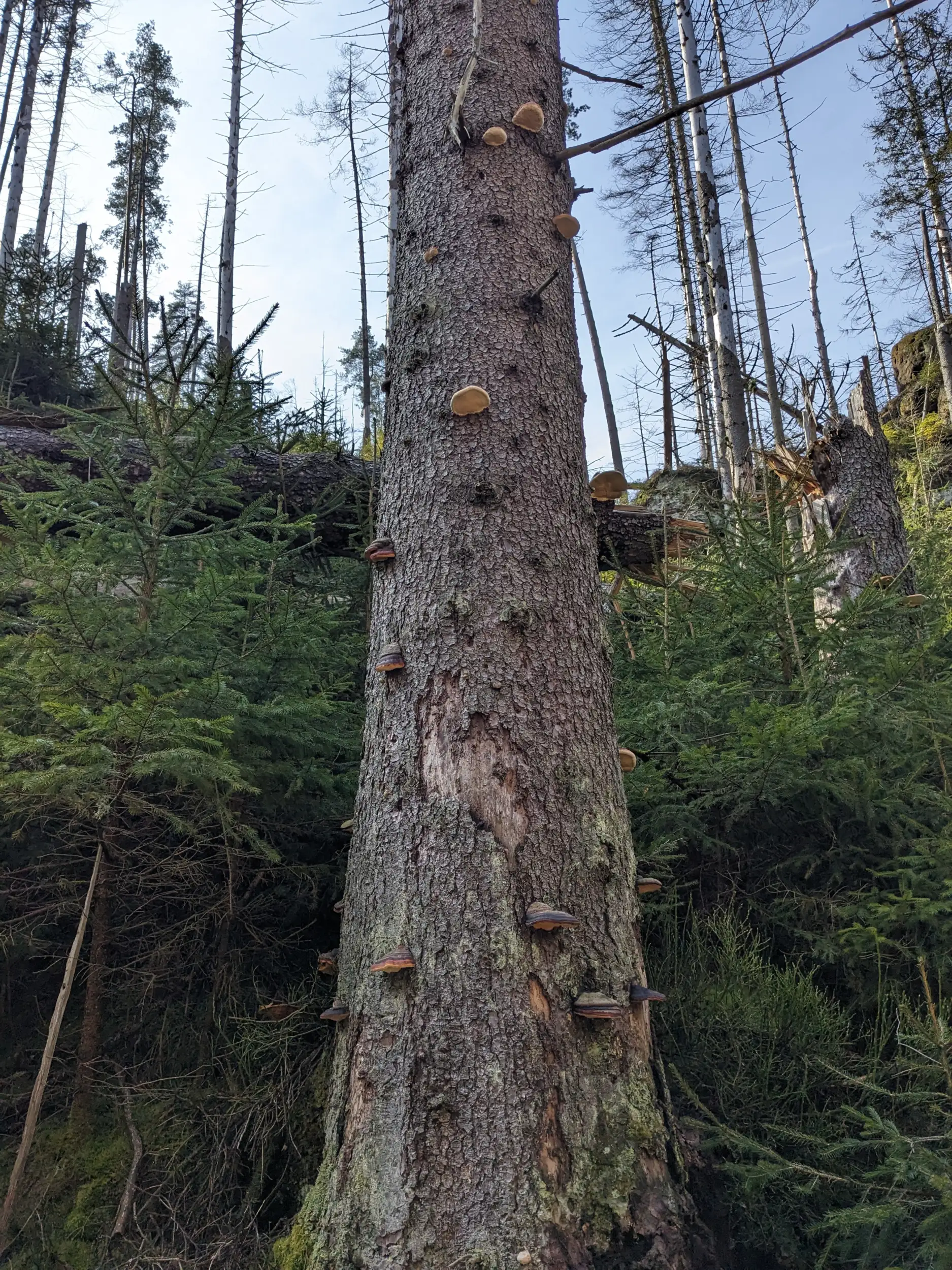
Danger from ash dieback
The so-called ‘ash shoot dieback’ leads to the death of shoots and branches, which can break off in the wind. In the example picture, the upper part of the crown is severely damaged.
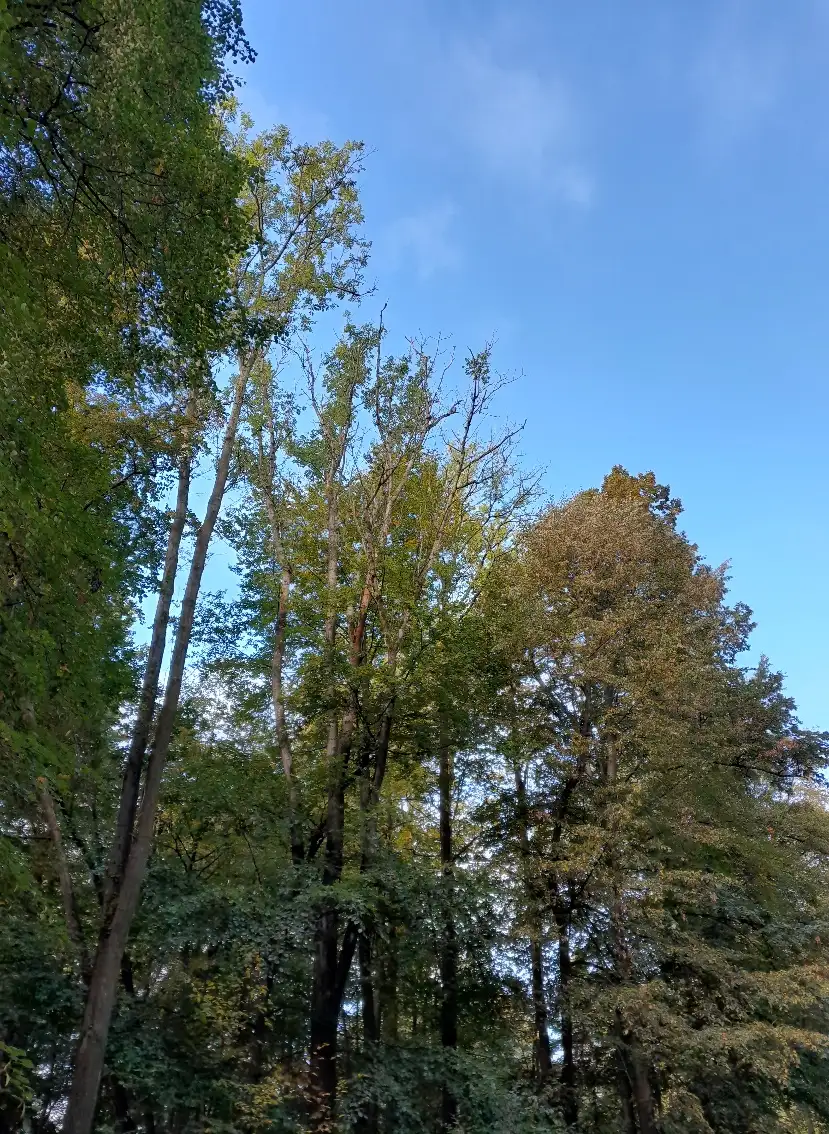
Travelling safely in the forest: how to deal with potential dangers
Attention is the best protection: recognising dangers early is crucial. Always be alert and pay attention to your surroundings, especially the treetops above you. Particularly in strong winds, snow or rain, listen out for noises such as the cracking or breaking of branches. In these cases, avoid dead spruce stands in particular, as there is an increased risk of trees falling and branches breaking due to changes in the load on the tree.
Look up: Look up into the treetops regularly. Look out for broken or dangerously hanging branches. If this is the case, it is best to pass the danger zone quickly. This also applies to walking through dead trees.
Be careful when taking a break: Caution is particularly important when taking a break. Check your surroundings, especially the treetops above you, before settling down. Are there dead branches hanging in the trees or are mushroom brackets visible? Are there any dead trees nearby? If there are such dangers, it is better to move on and choose a safe spot away from these areas.
That way you can enjoy your time in the forest - safely and relaxed!